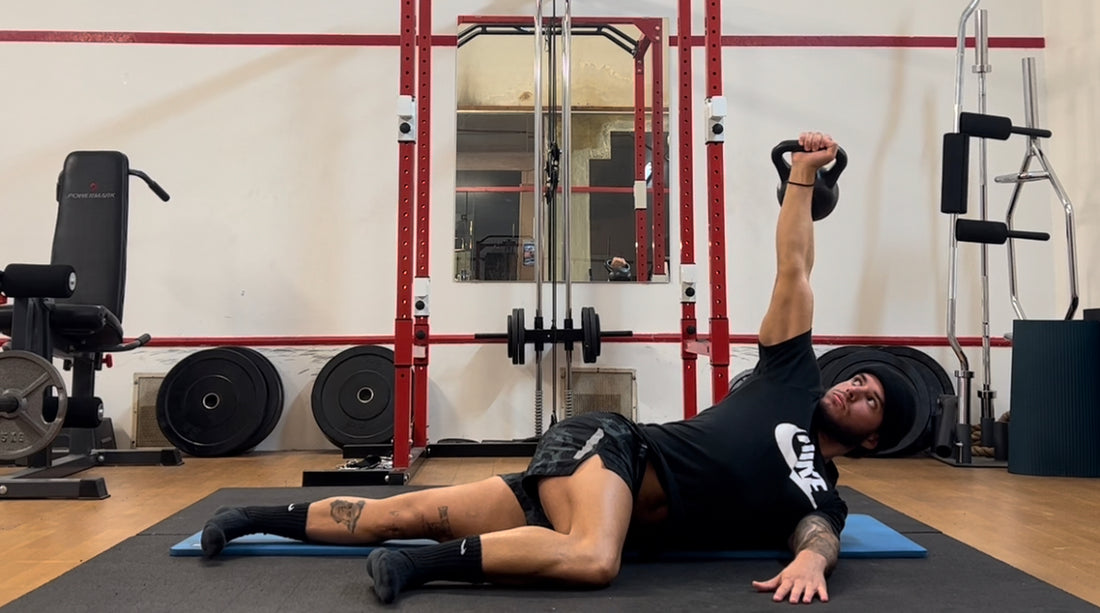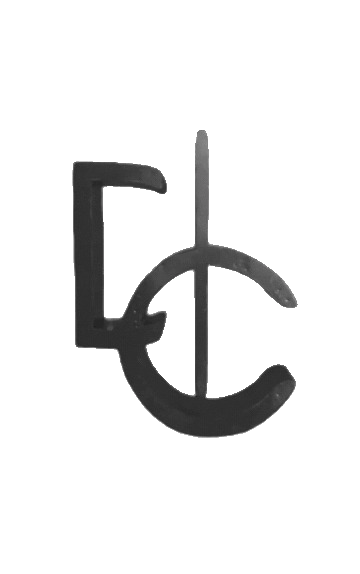
Exercise breakdown, Week 4: Rolling arm bar
WEEK 4 : Rolling arm bar
The "arm bar" exercise is a technique commonly used in various fitness disciplines, particularly in Brazilian Jiu-Jitsu (BJJ) and functional fitness training. It's a form of joint lock that primarily targets the shoulder joint, but also involves core engagement and mobility. The arm bar can be performed with or without weights, and its benefits extend beyond just building muscle strength.
How to Perform the Arm Bar Exercise:
Starting Position:
- Lie on your back with your legs straight. Hold a kettlebell, dumbbell, or barbell in one hand. Extend the arm holding the weight directly upward, perpendicular to your body.
Movement Steps:
- Leg Position: Bend the knee of the opposite leg (the side without the weight) and place that foot flat on the ground. The knee should be pointed outward.
- Rolling Movement: Roll onto your side, using your bent leg as a pivot point. As you roll, extend the non-weight-bearing arm to help with balance.
- Arm Bar Lock: Continue rolling until your weight-bearing arm is fully extended and parallel to the ground. Your body should form a straight line from head to the extended arm. The weight should be positioned over your shoulder joint.
- Final Position: You'll end up with your hips raised, torso twisted, and the weight locked out overhead.
- Return to Starting Position: Reverse the steps to return to the starting position, maintaining control throughout the movement.
Benefits of the Arm Bar Exercise:
- Shoulder Mobility and Flexibility: The arm bar requires a wide range of motion in the shoulder joint, helping to improve its flexibility and mobility.
- Core Engagement: The exercise demands core stabilization to maintain balance and control while performing the movement.
- Upper Body Strength: When performed with resistance, such as a kettlebell or a barbell, the arm bar can engage and strengthen the muscles in the shoulders, chest, and triceps.
- Joint Health: Practicing controlled joint locks like the arm bar can help increase joint awareness and potentially contribute to joint health over time.
Common Mistakes to Avoid:
- Lack of Control: Performing the arm bar too quickly or without proper control can lead to injuries, especially to the shoulder and neck.
- Insufficient Mobility: Trying to force the movement without adequate shoulder mobility can strain the joints and muscles.
- Poor Core Engagement: Neglecting core stabilization can lead to an unstable position, making it difficult to execute the exercise effectively.
- Incorrect Weight Positioning: The weight should be directly over the shoulder joint to ensure proper alignment and reduce stress on the shoulder.
- Overloading the Weight: Using too heavy of a weight can compromise your form and increase the risk of injury.
- Lack of Progression: As with any exercise, it's important to start with lighter weights and gradually progress as your strength and technique improve.
